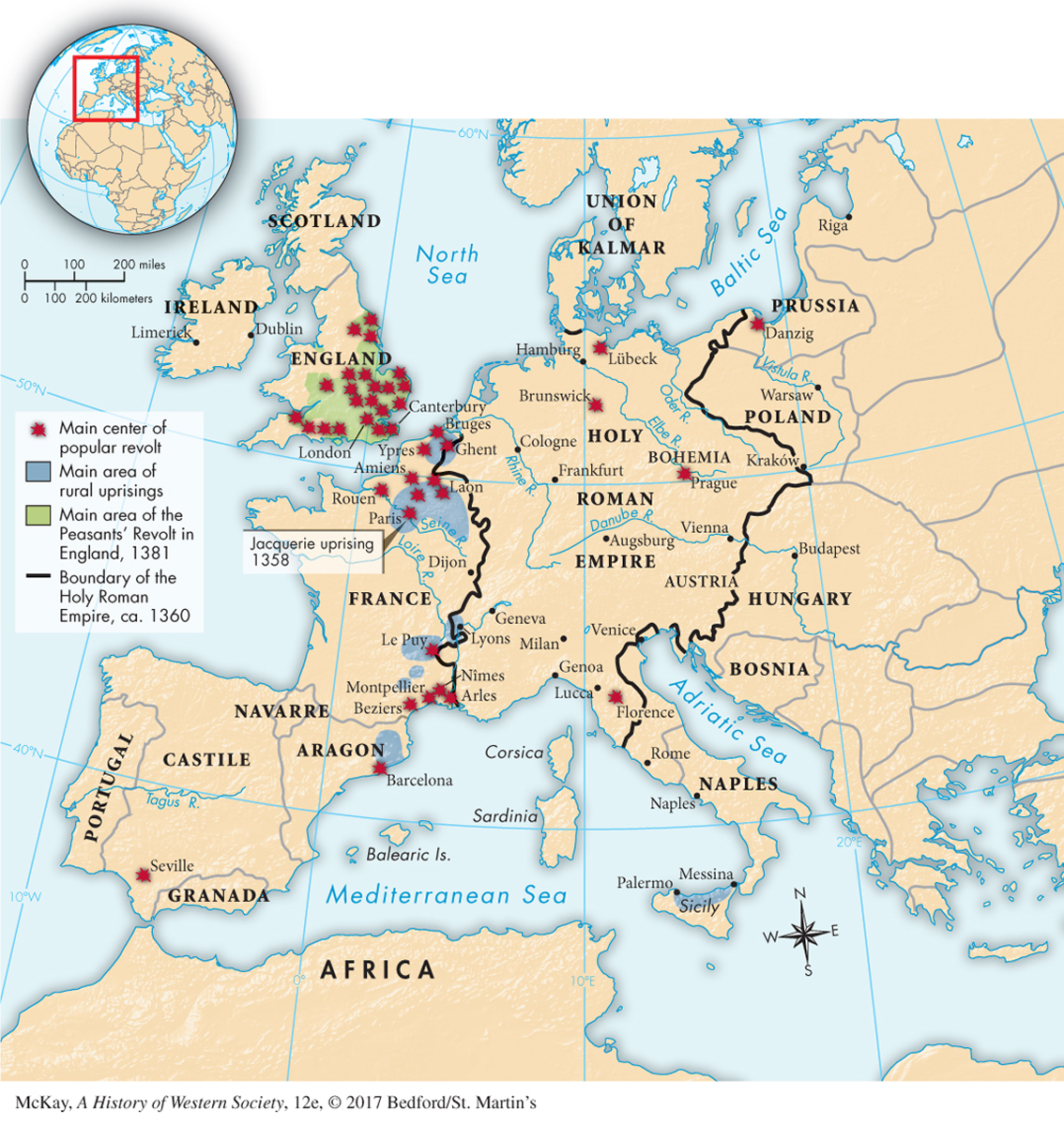A History of Western Society: Printed Page 343
A History of Western Society, Value Edition: Printed Page 330
A History of Western Society, Concise Edition: Printed Page 344
Peasant Revolts
Nobles and clergy lived on the food produced by peasant labor, thinking little of adding taxes to the burden of peasant life. While peasants had endured centuries of exploitation, the difficult conditions of the fourteenth and fifteenth centuries spurred a wave of peasant revolts across Europe. Peasants were sometimes joined by those low on the urban social ladder, resulting in a wider revolution of poor against rich. (See “Thinking Like a Historian: Popular Revolts in the Late Middle Ages.”)
The first large-

In the following decades, revolts broke out in many other places. In 1358, when French taxation for the Hundred Years’ War fell heavily on the poor, the frustrations of the French peasantry exploded in a massive uprising called the Jacquerie (zhah-
In England the Black Death drastically cut the labor supply, and as a result peasants demanded higher wages and fewer manorial obligations. Their lords countered in 1351 with the Statute of Laborers, a law issued by the king that froze wages and bound workers to their manors. This attempt to freeze wages could not be enforced, but a huge gap remained between peasants and their lords, and the peasants sought release for their economic frustrations in revolt. Other factors combined with these economic grievances to fuel the rebellion. The south of England, where the revolt broke out, had been subjected to destructive French raids during the Hundred Years’ War. The English government did little to protect the region, and villagers grew increasingly frightened and insecure. Moreover, decades of aristocratic violence against the weak peasantry had bred hostility and bitterness. Social and religious agitation by the popular preacher John Ball fanned the embers of discontent.
The English revolt was ignited by the reimposition of a tax on all adult males to pay for the war with France. Despite widespread opposition to the tax, the royal council ordered sheriffs to collect unpaid taxes by force in 1381. This led to a major uprising later termed the English Peasants’ Revolt, which involved thousands of people, including artisans and the poor in cities as well as rural residents. Beginning with assaults on the tax collectors, the revolt in England followed a course similar to that of the Jacquerie in France. Castles and manors were sacked. Manorial records were destroyed. Many nobles, including the archbishop of Canterbury who had ordered the collection of the tax, were murdered. The center of the revolt lay in the highly populated and economically advanced south and east, but sections of the north also witnessed rebellions (see Map 11.3).
The boy-